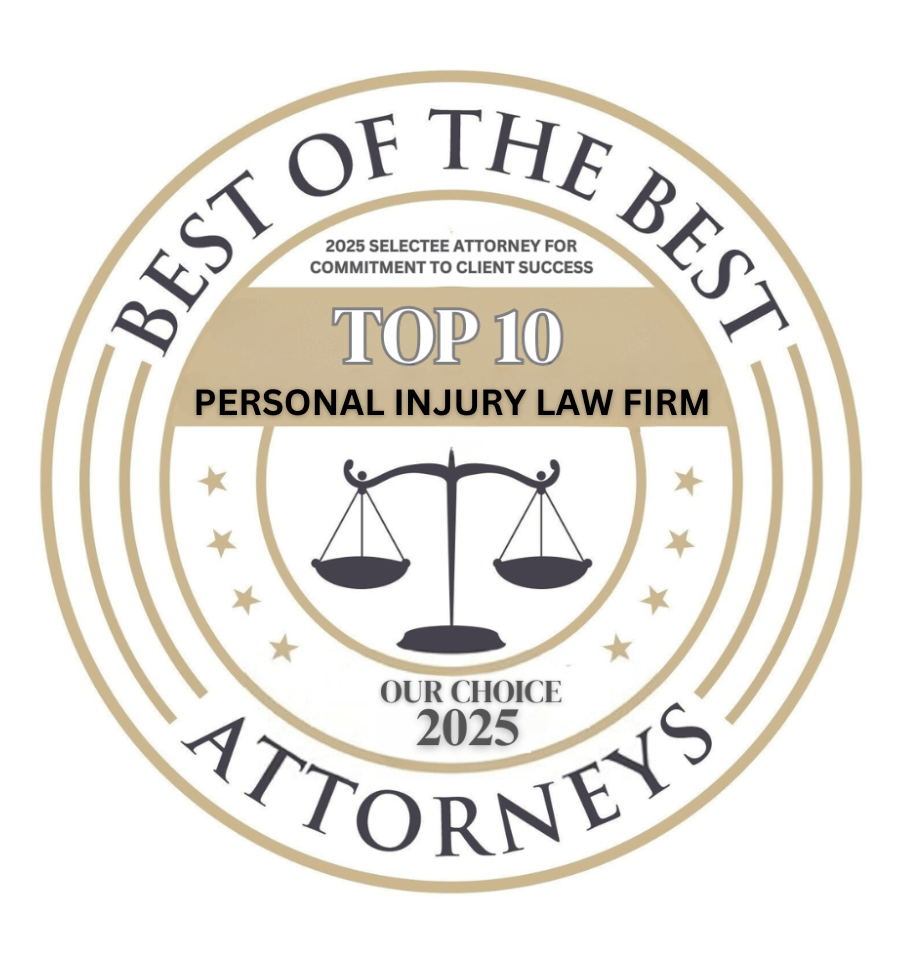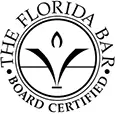All About Rollover Accidents
In Washington’s most recent rollover accident, a woman was killed after being involved in a rollover collision. The crash occurred near the intersection of Southwest 356th Street and 8th Avenue Southwest in Federal Way. The woman, who was in her late 40s was pronounced dead at the scene. A man in the other vehicle was taken to Harborview Medical Center in Seattle with serious injuries. The police are still working to determine the exact cause of the accident at the time the report was published.
Deadly rollover crashes happen every year in Washington state. These accidents can result in serious injuries and be devastating for victims. If you were injured in a rollover accident caused by another person’s carelessness or recklessness, you may be eligible to receive compensation for your injuries. An experienced car accident attorney can explain the process to you.
Rollover Accidents Explained
A rollover accident involves a vehicle tipping over onto its side or rolling completely over until it is upside down. In some cases, the car may roll over multiple times before it comes to rest. According to the National Highway Traffic Safety Administration (NHTSA), rollover accidents are relatively rare—accounting for only about 2 percent of all traffic crashes in the United States. However, they are a particularly deadly type of crash. The number of rollover accidents is increasing. Fatal rollover crashes are up nine percent from the previous year. Even though most rollovers involve a single vehicle, when a rollover car crash involves multiple vehicles, the chances of a fatality intensify. There are two types of rollover accidents:
Tripped Rollovers
Tripped rollovers account for 95 percent of single-vehicle rollovers. A tripped rollover occurs when the vehicle leaves the roadway and something trips it to cause it to roll over. The trip may be soft soil that the tires dig into, or it may be something such as a curb, median, or guardrail.
Untripped Rollovers
Untripped rollovers are the rarer of the two types of car rollover accidents, accounting for only about 5 percent. Oftentimes untripped rollovers happen when a top-heavy vehicle engages in a high-speed collision avoidance maneuver, such as swerving to avoid rear-ending a vehicle that turned onto the roadway without having an ample gap in traffic.
What Causes a Vehicle to Rollover?
Rollover accidents occur for a variety of reasons. Any vehicle is capable of a car rollover accident if the circumstances are right. The following are some of the factors that increase rollover risk.
The type of vehicle involved. The vehicle’s center of gravity impacts the likelihood that the car rolls. Vehicles with a high center of gravity or those that are top-heavy are most likely to experience a rollover, particularly an untripped rollover involving speed and a collision avoidance maneuver or even a sharp curve in the road. Some of the common types of vehicles involved in rollovers are sport utility vehicles, light passenger cars, pickup trucks, vans, and commercial trucks.
Many fatal rollover accidents involve high speeds. Speeding makes it harder to control a vehicle. Driving too fast reduces the reaction time that a person has between perceiving a hazard and coming to a safe stop. If the driver loses control, this reduced time to react can result in an over-correction or a sudden swerve that can cause the vehicle to roll. Speeding is a factor in approximately 40 percent of all rollover accidents. A Seattle rollover accident caused a car to virtually disintegrate and its driver to suffer severe injuries due to excessive speed. The driver suffered an apparent medical emergency before the crash, causing him to lose control of the vehicle.
Too much tire grip can lead to excessive sideways forces. This is particularly relevant for SUVs and pickup trucks outfitted with sporty aftermarket tires. Some aftermarket tires provide more grip than the original stock tires. The wrong tire for the terrain can be a factor in causing a rollover.
Not enough tire grip due to excessively worn tires. Not having enough grip is also a problem. Bald or worn tires reduce a car’s ability to grip the road, resulting in skidding that in turn leads to a rollover type of accident. The risk of having an accident with multiple injuries in a rollover increases in poor weather with bad tires.
Where the accident occurs. Rollovers occur more often on rural roadways in which there is only one lane per the direction of travel and a higher posted speed limit. A 70-year-old man was killed in a rollover crash on State Route 162 after he failed to negotiate a curve. His vehicle rolled over into a ditch. He was discovered by the Washington State Patrol with the car partially submerged in the water.
Overloading the vehicle, which places strain on the tires, makes the vehicle harder to maneuver, and can cause vehicle tips in top-heavy cars if the load is unbalanced or shifts during transport.
Alcohol. 30 percent of all rollover crashes involve an impaired driver. Alcohol impairment reduces many of the skills needed for the safe operation of a motor vehicle, including speed control and the ability to perceive and respond to hazards on the roadway. A woman suspected of driving under the influence of alcohol abandoned her vehicle after a rollover accident, leaving behind her injured twin sister in the wreckage. The rollover occurred when the vehicle that the woman was driving allegedly left the roadway for an unknown reason.
Curved roads or exit ramps, in combination with excessive speed and a top-heavy vehicle, can greatly increase one’s risk of being involved in a rollover crash.
An accident in which one vehicle serves as a “trip” to another vehicle, resulting in a rollover. A hotel shuttle bus near SeaTac Airport rolled over after allegedly being struck head-on by a passenger vehicle that had crossed the median into oncoming traffic. One person died and several more were injured.
Fatigue and distracted driving can cause a driver to drift off the road, increasing the chances of a vehicle rollover.
Icy or wet roads. A charter bus full of the University of Washington band members lost control on an ice-covered stretch of Interstate 90 and rolled over on its side. The crash resulted in injuries to nearly 40 people 120 miles southeast of Seattle.
Injuries Associated With Rollover Car Accidents
These types of crashes are, particularly violent accidents, and rollover accidents result in serious or catastrophic injuries. The severity of the injuries to crash victims often depends on whether the vehicle’s occupants were wearing their seat belts at the time of the collision. Failing to put on a seatbelt increases the risk of being ejected from the car. Some of the injuries often suffered by the victims of rollover accidents include:
Traumatic Brain Injuries
A traumatic brain injury can occur either from being ejected from the vehicle or from striking one’s head on an object inside of the car as it is rolling over. Traumatic brain injuries can be life-altering and can make life difficult by making it hard to walk, communicate, or recall events. Many individuals suffering from traumatic brain injury require round-the-clock care as they are no longer able to accomplish routine daily tasks on their own.
Spinal Cord Injuries
A spinal cord injury can be life-threatening and may result in full or partial paralysis of the limbs or even tetraplegia, which is the loss of sensation and function in all of the limbs, the torso, and the pelvis.
Broken Bones
Limb damage is often caused by ejection, striking the body against objects within the vehicle as it is rolling, or even getting limbs crushed beneath the vehicle.
Internal Damage
Organ and tissue damage might include punctured lungs resulting from broken ribs. Other organs can be damaged due to the force of the collision or from striking external objects after being ejected from the vehicle.
In addition to these physical injuries, victims of rollover accidents often experience other losses, such as lost income, vehicle or property damage, and pain and suffering.
How to Avoid a Rollover Accident
While it is impossible to control the actions of other drivers that may result in an accident, there are some things you can do to avoid a rollover or survive it if you experience one:
- Always wear a seat belt, even if you’re only going for a short drive. Seat belts allow you to remain inside the vehicle during the accident, which is typically your best opportunity to avoid serious injury or even death due to being ejected. Rollover fatalities frequently correlate with failure to use restraints. According to the NHTSA, nearly half of all the people killed in traffic-related crashes in the United States in one recent year weren’t wearing their seat belts. Seat belt use reduces your risk of death by up to 45 percent.
- When shopping for a vehicle, look for a newer car that has the benefit of improved safety equipment, including electronic stability control and side curtain airbags.
- Also, look for a vehicle that is lower to the ground. Remember that passenger vehicles with a higher center of gravity and a narrow base—such as SUVs, pickup trucks, or vans—have a higher risk of rolling over as well.
- Check the pressure on your tires. Under-inflated tires tend to run hotter than properly inflated tires, increasing the chance of a blowout that will make maneuvering your car very difficult. Over-inflated tires, while providing some degree of additional stability for the vehicle, are prone to severe damage by potholes and other irregularities in the road which could lead to loss of vehicle control. Consult the recommendations of the vehicle manufacturer to avoid under or over-inflating your tires.
- Watch your speed. The faster you’re going, the less time you have to respond appropriately to hazards in the roadway and the harder it is to maintain control of your vehicle.
- Don’t consume alcohol if you’re going to be driving, as impairment substantially increases your risk of any type of motor vehicle accident. By the same token, don’t drive if you’re overly tired. Fatigue produces similar symptoms as alcohol impairment in that it impacts your response time and your ability to control your speed.
- Be cautious when traveling on rural roadways that feature a lot of curves, few options for overtaking other vehicles, and a higher posted speed limit. Be alert for other drivers who may also be traveling the same roadway while not exercising the same measure of caution. Similarly, practice good highway safety by following the rules of the road and allowing proper following and stopping distance.
- Slow down for curves in the road. One of the primary causes of rollover accidents is loss of vehicle control due to excessive speed.
- Be aware of the conditions of the road. Wet roads reduce the traction that your vehicle’s tires can provide, sometimes resulting in a sideways skid that can be a precursor to a rollover.
- Allow enough space between your car and others on the roadway that you can stop for hazards without taking collision avoidance maneuvers that increase your risk of a rollover.
How Can a Car Accident Lawyer Help You in a Rollover Accident?
If you were injured in a rollover accident that was caused by someone else’s negligence, you may seek compensation by filing a third-party insurance claim with the liable party’s insurance carrier or via a personal injury lawsuit. Washington residents generally have up to three years from the date of the accident to file a lawsuit. A car accident attorney can explain each of these options to you and help with your case, including:

- Estimating the value of damages involved in your case based on the severity of the injuries you’ve suffered, the medical expenses you’ve incurred, and the impacts that your injury has had on your life and will have in the future.
- Examining the facts of your case to determine all sources of liability and all potential insurance resources that could be used to compensate you.
- Recovering evidence to support your case, including witness testimony from the accident scene, medical records, and police reports.
- Providing extensive knowledge of the legal process and your case so that y
- Aggressively negotiating with the insurance company in an attempt to get you the highest settlement possible.
- ou can make the most informed decision possible regarding accepting a proposed settlement or pursuing a lawsuit.
- Consulting with your doctors and other medical experts to provide an insurance company, a judge, or a jury with a valid glimpse as to your injuries and your prognosis.
- Representing you in court, including a timely filing of your lawsuit, adherence to all requirements involved in filing your claim, attendance at all pre-trial conferences and hearings, the presentation of your case, assistance in collecting any award you receive, and representation in an appeal, should one be filed.
Contact a Seattle Rollover Car Accident Attorney
If you’ve been in a rollover accident, you’ll likely have sustained serious injuries and need time to recover. You may be anxious about how you’ll pay for your medical bills and other expenses or have questions about what legal action you can take to compensate for your losses. Our experienced team of personal injury lawyers is dedicated to helping accident victims recover compensation for rollover crashes and other types of car accidents.
A skilled personal injury attorney can answer any questions you have regarding your car accident case. To learn more about vehicle rollover crashes, we also recommend reviewing some car accident statistics and FAQs. Contact us today for a free consultation.
2200 6th Avenue, Suite 768
Seattle, WA 98121
Free Consultation
We Are Here For You 24/7
Reviews
– Elissa M.
“Really pleased with Boohoff Law! Received immediate responses when I had any questions. Treated amazingly by all staff … made this process a true breeze!”
– Caitlyn M.
– Brandy K.
Related Posts
Lowball Offer for Your Totaled Car? What To Do When Your Car Was Totaled and the Insurance Offer Seems Too Low
Wrecked Without a Buckle: Can I File a Claim if I Wasn’t Wearing a Seatbelt in a Car Accident?
Sidelined by a Sudden Door? Figuring Out Who Is Liable in a Dooring Bicycle Accident
Recovery is personal.
We’re here for you.
We’re close by. And if you can’t make it to us, we’ll meet you where you need us, at home or in the hospital.
You're better off with Boohoff.











The information on this website is for general information purposes only. Nothing on this site should be taken as legal advice for any individual case or situation. This information is not intended to create, and receipt or viewing does not constitute, an attorney-client relationship.
available 24/7
(877) 999-9999
